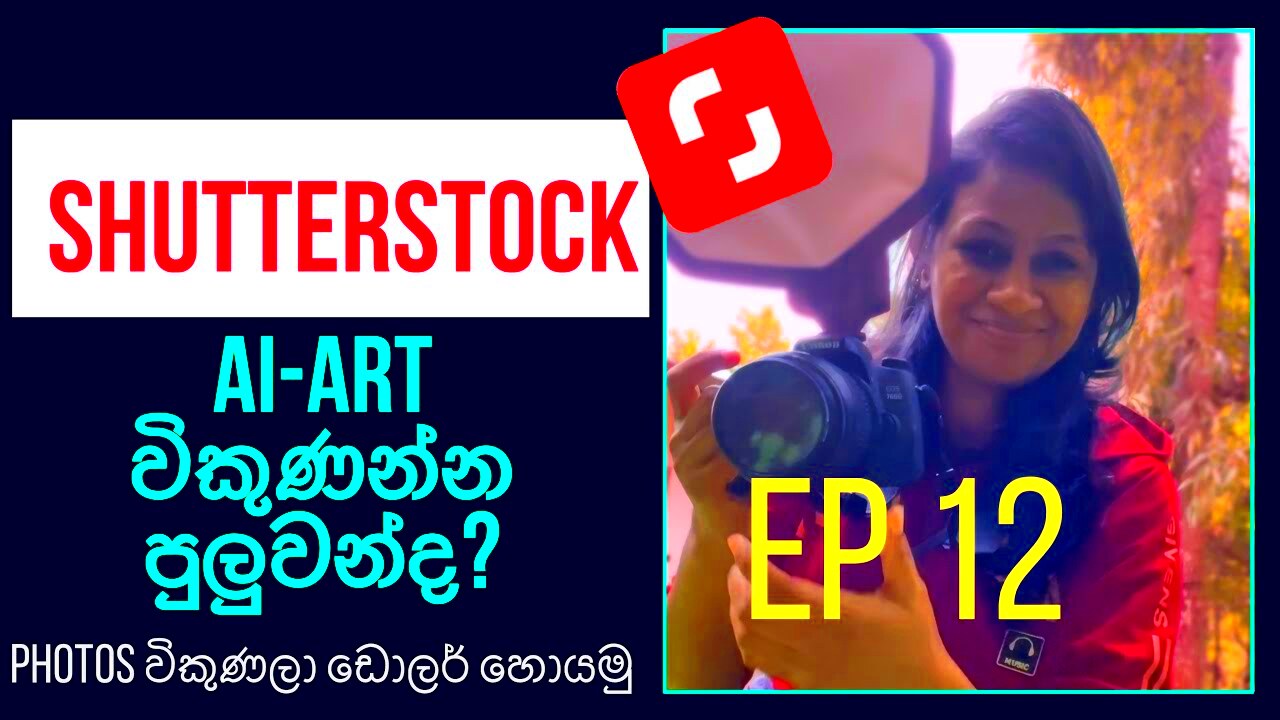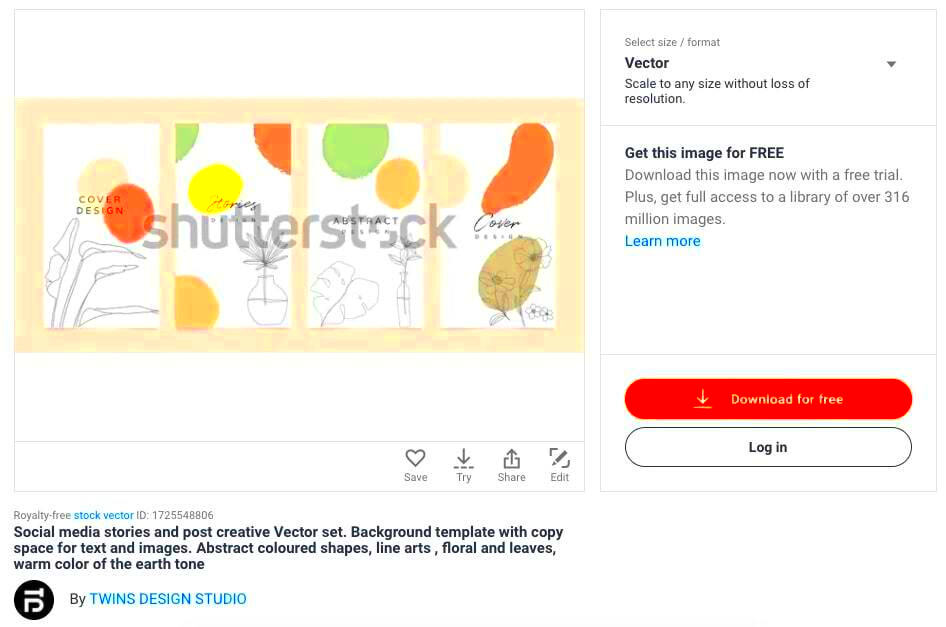Starting the journey of selling art on
Shutterstock can be an exhilarating yet daunting experience. I recall feeling a blend of excitement and apprehension when I began my own venture. While the platform presents a wide audience for your creations it's essential to grasp the navigation process.With its extensive marketplace
Shutterstock offers artists a chance to display their creativity and potentially monetize their artwork. In this guide well take you through the key aspects, from getting your artwork ready to enhancing your visibility on the platform.
Understanding Shutterstock's Platform for Artists
 Shutterstock
Shutterstock goes beyond being simply a platform for stock photos; it serves as a worldwide hub that brings together artists and buyers in search of top notch visual material. Here's a quick summary.
- Global Reach: Shutterstock connects artists with a vast international audience, offering the potential to reach clients from various industries.
- Variety of Content: The platform accepts diverse forms of art, including photos, illustrations, and videos, providing multiple avenues to showcase your work.
- Royalty System: Shutterstock operates on a royalty-based model, where you earn a percentage each time your art is downloaded or purchased.
Shutterstock stands out for its organized approach to supporting contributors. This ensures that even newcomers like you can navigate through the established procedures and available assistance. Personally I found it beneficial to engage in the community discussions and gain insights from fellow artists who had already traveled down that road.
Preparing Your Artwork for Shutterstock

Getting your artwork ready for
Shutterstock is all about being well prepared. Here’s a guide to help you make a lasting impact.
- Quality Matters: Ensure your images are high-resolution and free from any technical issues. Shutterstock has specific guidelines for file sizes and formats, so check these requirements carefully.
- Metadata and Keywords: Properly tagging your artwork with relevant keywords and metadata helps potential buyers find your work. Think about the terms they might use when searching for content similar to yours.
- Consistency: Develop a cohesive style or theme for your portfolio. Consistency can make your work more recognizable and appealing to buyers.
- Legal Considerations: Ensure you have the rights to any content used in your artwork, and be aware of Shutterstock’s licensing agreements to avoid any legal issues.
While getting my submissions ready I found it really helpful to make a list to make sure I didn’t overlook any crucial information. It’s also wise to take a look at portfolios on
Shutterstock to see what appeals to potential buyers. By taking these steps you can establish a strong groundwork for your achievements on the platform.
Uploading Art to Shutterstock
Uploading art to Shutterstock is a straightforward yet pivotal step in showcasing your creativity. I remember my first upload vividly—it felt like sending my art out into the world for the first time. Here's how you can make the process smooth:
- Creating an Account: Before you upload, you need to set up a contributor account. This process is quite user-friendly and involves providing some basic information about yourself.
- Preparing Your Files: Make sure your art files meet Shutterstock's technical requirements. For images, the recommended resolution is at least 4 megapixels, and the formats accepted are typically JPEG for photos and AI/EPS for vectors.
- Uploading Process: Once your files are ready, use Shutterstock’s uploader tool. You can drag and drop files or select them manually from your computer. The platform supports batch uploads, making it easier to upload multiple pieces at once.
- Adding Metadata: After uploading, you’ll need to add metadata such as titles, descriptions, and keywords. This is crucial for helping buyers find your work. Think about what terms your potential customers might use and include them in your descriptions.
In my experience, taking the time to properly tag and describe each piece made a big difference in how often my art was discovered. It's like setting up a display in a gallery—each detail can draw someone’s eye and make your work stand out.
Optimizing Your Art for Better Visibility
Getting your art noticed on Shutterstock requires a bit more than just uploading it. Optimization plays a significant role. Here’s how you can enhance the visibility of your work:
- Effective Keywords: Use specific and relevant keywords to describe your art. Think like a buyer—what words would they use to search for your type of artwork? Include these in your titles and tags.
- High-Quality Thumbnails: The thumbnail is the first impression your art makes. Ensure it’s clear and captivating. A well-chosen thumbnail can significantly increase your click-through rate.
- Regular Uploads: Keep your portfolio fresh by regularly adding new content. This not only keeps your work visible but also helps you stay relevant in search results.
- Engage with Trends: Pay attention to trends and popular themes. If you can create art that aligns with current trends or seasonal themes, you might see increased interest and downloads.
When I adjusted my approach to include more targeted keywords and updated my thumbnails, I noticed a marked improvement in visibility. It’s all about making sure your art gets seen by the right audience.
Pricing and Licensing Options on Shutterstock
Understanding pricing and licensing on Shutterstock can be a bit complex, but it’s essential for managing your expectations and earnings. Here’s a breakdown:
- Pricing Structure: Shutterstock offers various pricing plans for buyers, including subscriptions and on-demand packs. As a contributor, you earn royalties based on these plans. Your earnings are a percentage of the sale price.
- Licensing Types: Shutterstock provides two main types of licenses—Standard and Enhanced. The Standard license covers most uses, while the Enhanced license allows for higher usage limits and more extensive applications. Make sure to understand the differences to set appropriate expectations for your work.
- Royalty Rates: Your earnings per download depend on your contributor level and the type of license purchased. Typically, the more downloads you have, the higher your royalty rate can become.
- Exclusive vs. Non-Exclusive: You can choose to be an exclusive contributor (offering your work only on Shutterstock) or a non-exclusive one (selling on multiple platforms). Each choice has its implications for earnings and exposure.
In my own experience, understanding these details helped me make informed decisions about my pricing strategy and contributed to more effective management of my portfolio. It’s worth taking the time to familiarize yourself with these aspects to maximize your success on Shutterstock.
Marketing Your Art on Shutterstock
Promoting your artwork on Shutterstock might seem like a challenge, but it’s crucial to boost your exposure and draw in potential customers. When I first began I discovered that simply uploading my creations was just the first step. Here are a few tactics that proved beneficial for me, along the way.
- Build a Strong Portfolio: A diverse and well-curated portfolio can make a significant impact. Ensure your work is varied but still reflects a cohesive style or theme. A strong portfolio can catch the eye of buyers who are looking for specific types of content.
- Utilize Social Media: Promote your Shutterstock portfolio on platforms like Instagram, Facebook, and Twitter. Share your art, behind-the-scenes glimpses, and updates. Engaging with your audience can drive traffic to your Shutterstock profile.
- Participate in Community Forums: Join Shutterstock’s community forums and other art-related groups. Engaging with other artists and potential buyers can provide valuable insights and increase your exposure.
- Offer Unique Content: Try to offer something unique or different from what is commonly available. Buyers often seek distinctive and original content, so adding your personal touch can set you apart.
As I started posting my artwork on social media and participating in discussions, I saw a boost in interaction. Its really about building relationships and making sure your creations receive the recognition they deserve.
Common Challenges and Solutions
Dealing with obstacles is something that comes with the territory when it comes to selling art on the internet. In my personal experience I've run into some challenges and found solutions to tackle them.
- Low Visibility: It can be frustrating when your art doesn’t get the attention you hoped for. To combat this, focus on optimizing your keywords and regularly updating your portfolio. Engaging with social media and community forums can also drive more traffic to your work.
- Rejection of Submissions: Rejections can be disheartening, but they are part of the process. Review Shutterstock’s guidelines carefully and adjust your submissions accordingly. Sometimes, small tweaks can make a big difference.
- Understanding Licensing: Navigating Shutterstock’s licensing options can be confusing. Take the time to read through their licensing policies and understand the implications for your work. Clear understanding can help in making informed decisions.
- Pricing Confusion: Pricing your art appropriately can be challenging. Research how similar works are priced on Shutterstock and adjust your pricing strategy based on this research.
Every obstacle I encountered imparted important insights and conquering them played a role in my journey of growth. Embrace these challenges as chances to fine tune your strategy and enhance your achievements on Shutterstock.
FAQ
1. How can I increase my earnings on Shutterstock?
To enhance your income prioritize sharing content that is varied and of top notch quality. Fine tune your keywords and metadata and explore joining Shutterstock's exclusive contributor program if it suits your objectives.
2. What should I do if my art gets rejected?
Take a look at the feedback from Shutterstock and make the necessary changes to your submissions. Before re uploading make sure your work aligns with their technical and content standards.
3. Can I sell the same art on other platforms?
Sure you can. However if you decide to be an exclusive contributor on Shutterstock you'll have to limit your work solely to their platform.
4. How often should I upload new content?
Consistent updates can help refresh your portfolio and boost your presence. Try to share fresh material at least once a month or even more often if you can.
5. What are the best practices for writing metadata?
Choose titles that are clear and descriptive and incorporate relevant keywords that truly represent your artwork. Steer clear of cramming in too many keywords and instead prioritize terms that potential customers are more likely to use in their searches.
Conclusion
Selling art on Shutterstock can be a rewarding yet challenging journey. Based on my experience I've learned that success comes from staying persistent and constantly learning. Begin by familiarizing yourself with the platform and meticulously preparing your artwork. Employ marketing strategies to enhance your visibility and approach challenges with a proactive mindset.It's important to remember that every artist follows a path and it's through experimentation and refining your approach that you'll discover what suits you best. Continuously push your boundaries, stay connected with the community and you're likely to see the fruits of your labor. Embrace the journey and allow your art to find its place in the world through Shutterstock.
 Shutterstock goes beyond being simply a platform for stock photos; it serves as a worldwide hub that brings together artists and buyers in search of top notch visual material. Here's a quick summary.
Shutterstock goes beyond being simply a platform for stock photos; it serves as a worldwide hub that brings together artists and buyers in search of top notch visual material. Here's a quick summary. Getting your artwork ready for Shutterstock is all about being well prepared. Here’s a guide to help you make a lasting impact.
Getting your artwork ready for Shutterstock is all about being well prepared. Here’s a guide to help you make a lasting impact.
 admin
admin








